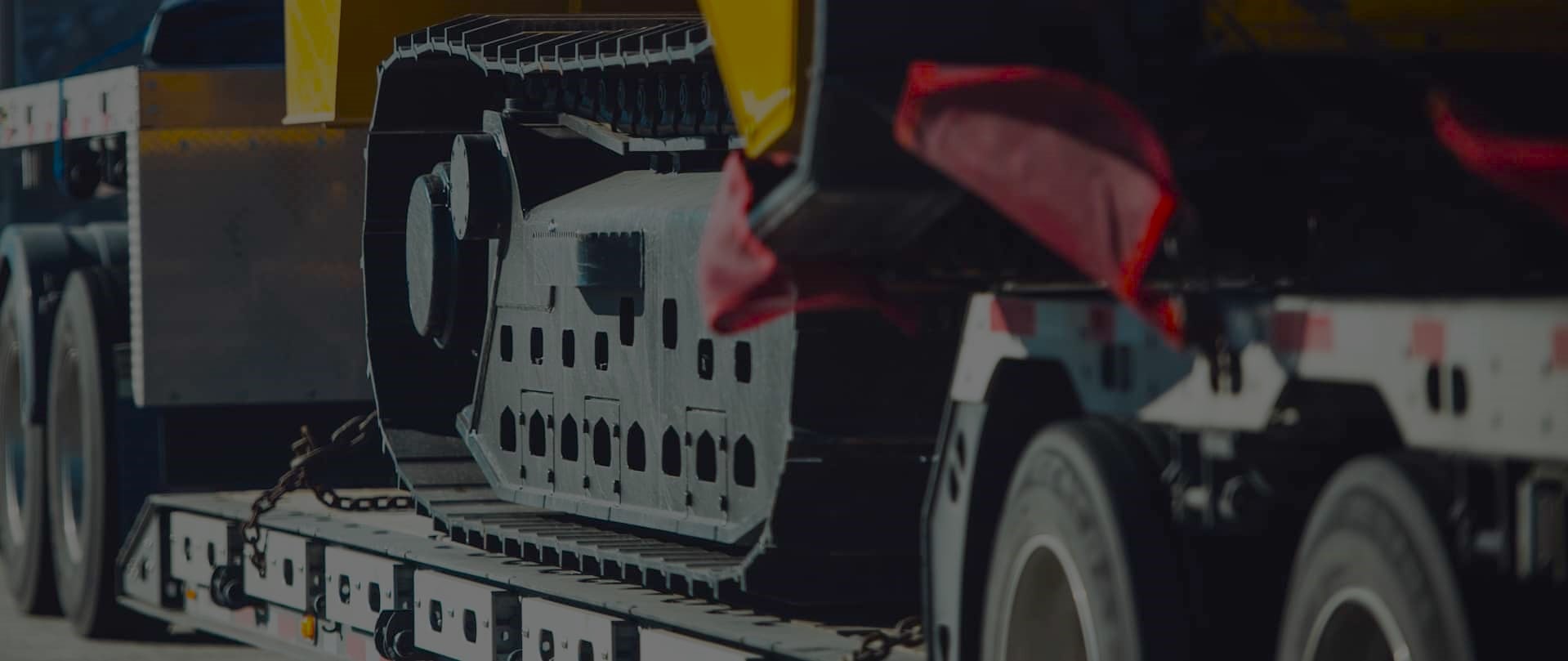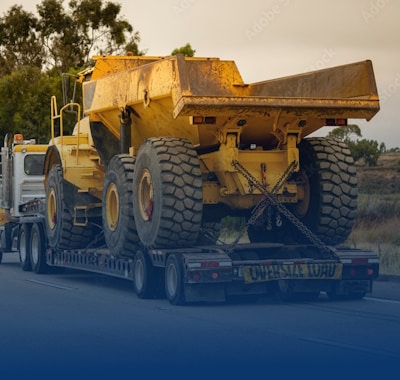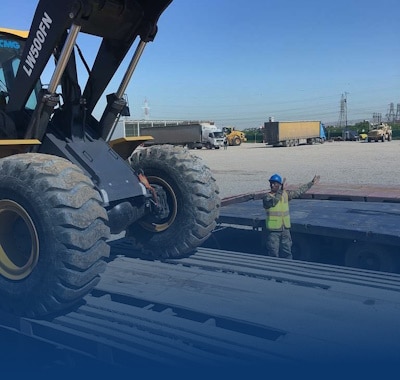Dealing with Customs and Border Control in Equipment Transportation
Freedom Heavy Haul can offer expedited Pickup and Delivery for any size shipment anywhere in the USA. Contact us today for No Hassle, No Pressure Pricing.
Navigating the complexities of custom clearance is a critical step in ensuring the smooth movement of equipment across borders. Whether you’re importing or exporting, understanding the process can save time, reduce costs, and prevent delays. Proper documentation, such as the commercial invoice and packing list, is essential for compliance and efficient shipment.
Inspections and adherence to regulations play a vital role in the custom clearance process. Each country has its own rules, and staying informed helps avoid penalties. Partnering with a custom broker can provide expert guidance, ensuring all requirements are met.
By mastering these steps, businesses can enhance their international trade operations. This guide will walk you through the key aspects, helping you achieve safe and efficient equipment delivery.
Understanding the Customs Clearance Process
Proper documentation is the backbone of successful cargo shipments. It ensures that goods move seamlessly across borders while adhering to legal requirements. We’ll explore the key aspects of this process, from defining customs clearance to understanding the role of inspections.
Defining Customs Clearance and Documentation
Customs clearance is the legal process of moving goods into or out of a country. It involves submitting the necessary paperwork, paying duties, and complying with regulations. Essential documents include the bill of lading, commercial invoice, and packing list.
Accurate documentation ensures that shipments are processed quickly. Errors can lead to delays, fines, or even confiscation of goods. For example, when shipping tracked loaders, proper paperwork is crucial to avoid complications. Learn more about tracked loader shipping to ensure compliance.
The Role of Inspections and Compliance Checks
Inspections are a critical part of the customs process. They verify that shipments meet safety and regulatory standards. These checks protect domestic industries and ensure fair trade practices.
Both importers and brokers play a role in ensuring compliance. Importers must provide accurate information, while brokers act as experts to navigate complex regulations. Together, they ensure a smooth clearance process.
| Document | Purpose |
|---|---|
| Bill of Lading | Proof of shipment and ownership |
| Commercial Invoice | Details the value and description of goods |
| Packing List | Lists all items in the shipment |
Step-by-Step Guide to Importing Heavy Equipment
Importing heavy equipment requires careful planning and precise execution. Each step, from documentation to inspections, plays a vital role in ensuring a smooth process. By understanding these stages, businesses can avoid delays and additional costs.
Submitting Required Documentation
The first step involves preparing and submitting the necessary paperwork. Key documents include the bill of lading, commercial invoice, and packing list. These provide essential details about the shipment, such as its value, contents, and ownership.
Accurate documentation ensures faster processing and reduces the risk of errors. For example, a missing or incorrect commercial invoice can lead to delays or penalties. Partnering with a custom broker can help streamline this process.
Inspection, Duties, and Equipment Release
Once the paperwork is submitted, the shipment undergoes an inspection. This step verifies that the equipment meets safety and regulatory standards. Inspections also ensure compliance with international trade laws.
After inspection, duties and taxes are calculated based on the equipment’s value and type. Payment of these fees is required before the equipment can be released. Understanding how duties are calculated can help businesses budget effectively.
| Step | Key Actions |
|---|---|
| Document Submission | Prepare and submit bill of lading, commercial invoice, and packing list. |
| Inspection | Verify equipment condition and regulatory compliance. |
| Duty Payment | Calculate and pay applicable duties and taxes. |
| Release | Obtain clearance for equipment delivery. |
For more insights on handling cross-border shipments, visit our guide on cross-border heavy haul shipments. This resource provides additional tips for ensuring a seamless import process.
Factors Impacting Customs and Border Control Procedures
The efficiency of moving goods across borders depends on several key factors. From the country of origin to the complexity of the equipment, each element plays a crucial role in shaping the customs process. Understanding these variables can help businesses avoid delays and ensure smooth clearance.
Country of Origin and Equipment Complexity
The country of origin significantly influences customs procedures. Different nations have unique regulations and trade agreements that impact how shipments are processed. For example, goods from countries with favorable trade deals may clear faster.
Equipment complexity also affects the process. Highly specialized machinery often requires additional inspections and documentation. This ensures compliance with safety and regulatory standards. Proper planning can mitigate potential challenges.
Shipping Methods and Documentation Accuracy
Shipping methods play a vital role in determining clearance times. Air freight is typically faster but may involve stricter inspections. Sea freight, while cost-effective, can face delays due to port congestion.
Accurate documentation is essential for smooth clearance. Errors in the bill of lading or commercial invoice can lead to delays or penalties. Partnering with a custom broker can help ensure all paperwork is correct and complete.
“Precision in documentation is the key to avoiding unnecessary delays in customs clearance.”
External factors, such as international trade policies, also impact the process. Staying informed about these regulations helps businesses adapt and comply. For example, understanding how to ship tire-loaded equipment ensures compliance with legal requirements.
By addressing these factors, businesses can streamline their operations and reduce the risk of delays. Proper planning and attention to detail are essential for successful cross-border shipments.
Navigating U.S. Customs Regulations and CBP Requirements
Understanding U.S. Customs and Border Protection (CBP) requirements is essential for efficient cross-border shipments. Compliance with these regulations ensures that goods move smoothly through the clearance process, minimizing delays and avoiding penalties. We’ll explore the electronic declaration system and the key documents needed for seamless cargo release.
Electronic Declarations and CBP Systems
The CBP electronic declaration system streamlines the custom clearance process. Importers and exporters can submit required information online, reducing paperwork and processing time. This system also enhances accuracy by minimizing manual errors.
Advanced CBP systems, such as the Automated Commercial Environment (ACE), facilitate faster clearance. These platforms allow real-time tracking of shipments and provide updates on duty and tax calculations. Utilizing these tools ensures compliance and speeds up the process.
Key Entry Documents for Smooth Clearance
Accurate documentation is critical for CBP compliance. Key forms include CBP Form 3461 (Entry/Immediate Delivery) and Form 7501 (Entry Summary). These documents provide essential details about the goods, such as their value, origin, and intended use.
The commercial invoice and bill of lading are also required. These forms verify the shipment’s contents and ownership, ensuring smooth clearance. Partnering with a custom broker can help ensure all paperwork is complete and accurate.
| Form | Purpose |
|---|---|
| CBP Form 3461 | Immediate delivery of goods |
| CBP Form 7501 | Summary of entry details |
| Commercial Invoice | Details value and description of goods |
| Bill of Lading | Proof of shipment and ownership |
By adhering to these requirements, businesses can ensure timely and efficient cargo release. Proper planning and attention to detail are key to navigating U.S. Customs regulations confidently.
Mastering Dealing with Customs and Border Control in Equipment Transportation
Mastering the customs process ensures smooth cross-border shipments. We share strategies to help businesses navigate these complexities with confidence. By focusing on internal expertise and consistent process reviews, companies can turn customs procedures into a competitive advantage.
One of the most common challenges is ensuring accurate documentation. Missing or incorrect paperwork can lead to delays, fines, or even cargo confiscation. Regular audits of your import export processes can help identify and address potential issues early.
Proactive planning is essential for compliance and timely entry. This includes understanding duty tax calculations and staying updated on regulations. By making customs procedures a core part of your operations, you can minimize risks and enhance efficiency.
- Conduct regular process reviews to identify inefficiencies.
- Partner with a custom broker for expert guidance.
- Stay informed about international trade policies and changes.
By adopting these strategies, businesses can transform custom clearance from a challenge into a strength. This ensures that your shipments move seamlessly across borders, saving time and reducing costs.
Leveraging Customs Broker Expertise for Seamless Operations
Partnering with a skilled custom broker can transform the way your business handles international shipments. These professionals bring deep knowledge of regulations and documentation, ensuring your goods move smoothly across borders. Their expertise minimizes delays, reduces costs, and keeps your operations on track.
Benefits of Working with Experienced Custom Brokers
Experienced custom brokers simplify the clearance process. They handle complex paperwork, ensuring all forms and documents are accurate and complete. This reduces the risk of errors that could lead to fines or delays.
Brokers also stay updated on regulations in each country. This knowledge helps them navigate unique requirements, ensuring compliance and smooth entry for your cargo. Their proactive approach saves time and resources.
Another key benefit is their ability to manage duty and tax calculations. They ensure you pay the correct amounts, avoiding overpayments or penalties. This financial oversight is invaluable for businesses managing tight budgets.
“Working with a customs broker was a game-changer for our international shipments. Their expertise saved us time and money, and we never had to worry about compliance issues.” – Sarah T., Logistics Manager
Real-World Testimonials and Trustworthy Service
Many businesses rely on custom brokers for safe and efficient shipping. Their testimonials highlight the peace of mind that comes with expert guidance. For example, a construction company reduced delays by 30% after partnering with a broker.
Trust is a cornerstone of this relationship. Brokers act as an extension of your team, ensuring your shipments meet all regulations. Their commitment to accuracy and efficiency builds long-term partnerships.
For businesses transporting heavy machinery, a forklift transport broker can provide specialized support. They handle logistics, route planning, and compliance, ensuring your equipment arrives safely and on time.
| Benefit | Impact |
|---|---|
| Accurate Documentation | Reduces errors and delays |
| Regulatory Expertise | Ensures compliance with country-specific rules |
| Duty and Tax Management | Prevents overpayments and penalties |
| Time Savings | Speeds up the clearance process |
By leveraging the expertise of a custom broker, businesses can turn custom clearance into a strategic advantage. Their guidance ensures smooth operations, cost savings, and compliance with international trade regulations.
Best Practices to Avoid Extra Customs Expenses and Delays
Avoiding delays and extra costs starts with meticulous preparation and strategic execution. By focusing on key areas like documentation and shipping strategies, businesses can streamline their operations and ensure smooth cross-border shipments.
Reviewing Documentation to Prevent Mistakes
Accurate documentation is the foundation of a successful custom clearance process. Errors in forms like the commercial invoice or bill of lading can lead to delays, fines, or even cargo confiscation. We recommend double-checking every document before submission to ensure compliance with regulations.
Partnering with a custom broker can also help. These experts review paperwork for accuracy and completeness, reducing the risk of mistakes. Their knowledge of country-specific rules ensures your shipment meets all requirements.
Optimizing Packaging and Shipping Strategies
Proper packaging and shipping methods can significantly reduce costs. For example, optimizing container space minimizes duty tax calculations based on volume. Using durable materials also prevents damage during transit, avoiding additional fees.
Choosing reliable shipping companies is equally important. Look for providers with a proven track record in handling equipment shipments. Their expertise ensures timely delivery and compliance with import regulations.
“Accuracy in documentation and strategic shipping choices are the cornerstones of efficient customs clearance.”
| Best Practice | Impact |
|---|---|
| Review Documentation | Prevents errors and delays |
| Optimize Packaging | Reduces duty and tax costs |
| Select Reliable Shippers | Ensures timely delivery |
| Partner with Brokers | Guarantees compliance |
By adopting these strategies, businesses can save time and money while ensuring smooth clearance. Careful planning and attention to detail are essential for successful cross-border operations.
Critical Tips for Documentation and Compliance in International Trade
Accurate documentation is the cornerstone of successful international trade operations. Proper preparation and review of key documents ensure compliance and smoother custom clearance. We’ll explore the essential steps to maintain accuracy and avoid costly delays.
Preparing and Reviewing Key Documents
The commercial invoice, bill of lading, and packing list are critical for every shipment. These documents provide details about the goods, their value, and ownership. Errors in these forms can lead to delays, fines, or even cargo confiscation.
We recommend double-checking all paperwork before submission. Partnering with a custom broker can help ensure accuracy and compliance with regulations. Their expertise minimizes risks and speeds up the clearance process.
Maintaining Consistent Record-Keeping
Consistent record-keeping is essential for meeting import and export requirements. It helps businesses track shipments, verify duty and tax payments, and ensure compliance with international trade laws.
Regular internal checks can identify potential issues early. This proactive approach reduces the risk of errors and ensures smooth entry for your equipment.
| Document | Purpose |
|---|---|
| Commercial Invoice | Details the value and description of goods |
| Bill of Lading | Proof of shipment and ownership |
| Packing List | Lists all items in the shipment |
By focusing on accurate documentation and consistent record-keeping, businesses can streamline their operations. This ensures compliance, reduces delays, and enhances efficiency in international trade.
Final Tips and Key Takeaways for a Seamless Transportation Experience
Ensuring smooth cross-border shipments requires attention to detail and expert guidance. We’ve outlined the essential steps to master the custom clearance process, from accurate documentation to working with experienced brokers.
Key takeaways include double-checking all documents, understanding duty and tax calculations, and staying updated on regulations. Partnering with a broker can save time and reduce errors, ensuring your equipment moves efficiently across borders.
To avoid delays and extra fees, plan ahead and maintain consistent record-keeping. Our team is committed to providing reliable, expert heavy-haul services that prioritize your cargo’s safety and timely delivery.







